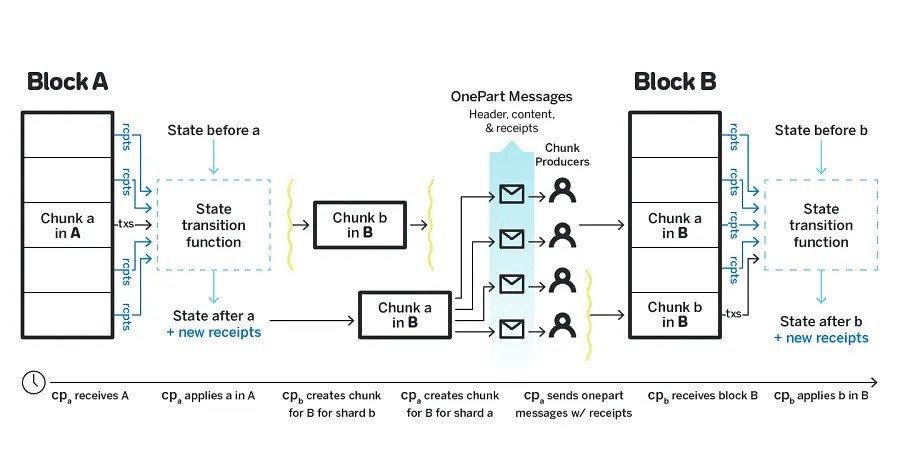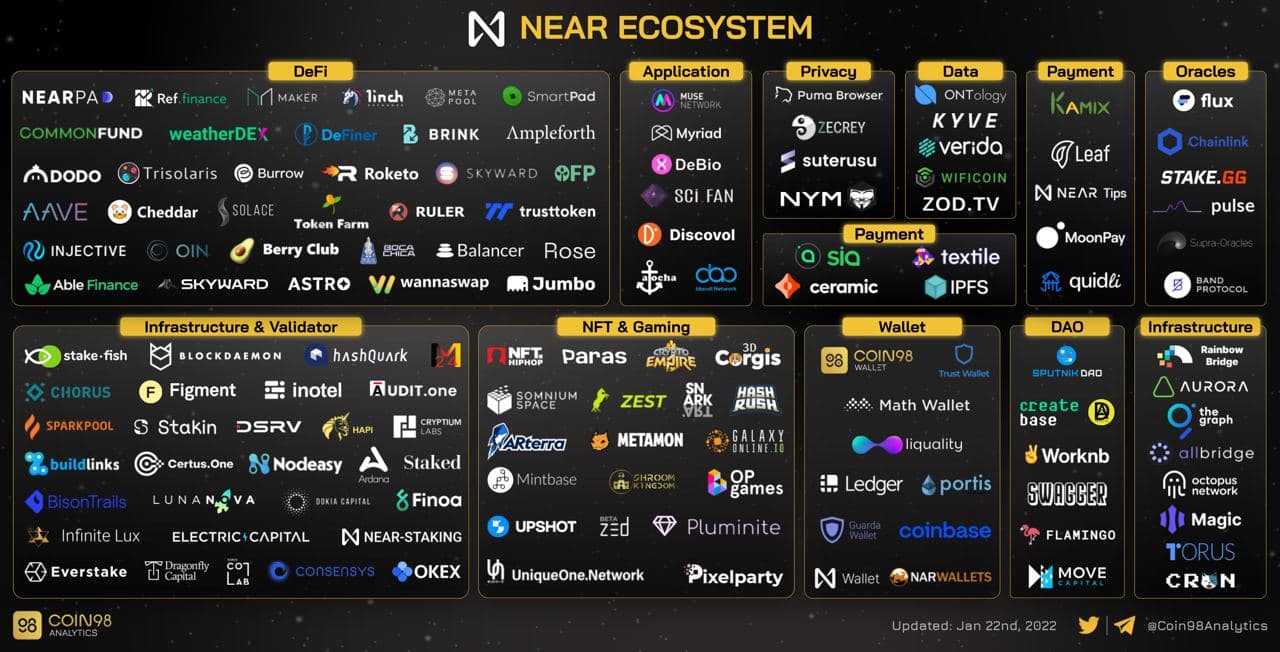The NEAR Protocol blockchain is not as flashed out in the crypto news as many other platforms. However, its impact on the market and its role in the development of DeFi is becoming more and more noticeable.
The NEAR blockchain platform is an infrastructure layer similar to many other comparable platforms. Developers deploy decentralized applications, and network nodes manage all operational actions (creating an account, executing a transaction, etc.). The NEAR network transaction fees are 1000 times lower than Ethereum, giving the project a significant advantage in the market. The platform charges 30% of transaction fees.
It’s not often that the creators of a new technology are primarily driven by an idea and only successfully commercialize their project in the process of pursuing it. But in the case of NEAR Protocol, it is exactly what happened. In the words of NEAR CEO Iliia Polosukhin, “The global mission of NEAR is to create a world where people control their finances and their data, a world in which they can vote and be a part of the decision-making process. We call it OpenWeb, or Web 3.0. We want to move away from centralized systems that control the users to a structure managed by the people who participate in it. To do this, you need to build a platform available to billions of people and based on the main principles of simplicity, safety, and scalability.”
According to the project authors, their system must be easily navigated by everyone. Even though not every person knows what blocks, hashes, addresses, private keys are, they should be able to use the platform without much thinking. At the same time, developers should not have to learn new programming languages. For them, it is supposed to feel like they’re developing a regular Web application, just with some new features.
Other requirements the founders view as fundamentally important include blockchain security and scalability “bundled” with the work speed. As a result, the NEAR blockchain is a platform that allows you to build independent apps integrated into other apps. The NEAR ecosystem includes NEAR Protocol – the blockchain itself, DApps – decentralized applications on the blockchain that can interact with each other and build complex systems, Indexers – toolkits for developers, and Communities – groups involved in developing the entire project.
In technical terms, NEAR Protocol is a blockchain platform able to quickly create smart contracts and decentralized applications (DApps). Smart contracts are written using Rust and AssemblyScript languages. The latter is perfect for JavaScript developers, while the former is recommended by NEAR developers for smart contracts that manage significant capital.
NEAR Protocol is based on the Delegated Proof-of-Stake (DPoS) consensus algorithm. The platform can process about 1000 transactions per second on one shard when transferring tokens (operations with smart contracts are slower). MainNet currently consists of one shard, but the NEAR team plans to launch MainNet with eight shards in the future, bringing the project close to the 10,000 TPS threshold.

And while NEAR Protocol is built on sharding, it works differently than solutions in blockchains like, for example, Polkadot. All shards within the NEAR platform are treated as part of the same blockchain. This mechanism is called Nightshade, and it simply adds a snapshot of each shard’s current state to the blockchain. Shards are maintained by their own set of validator nodes, which indicate their state each time a block is created. NEAR shards can operate simultaneously because the transactions performed on them do not overlap, which greatly improves the efficiency of the platform as a whole.
Another essential component of NEAR Protocol is the Doomslug mechanism. It allows validator nodes to take turns generating blocks, which happens every 12 hours and requires approximately one second. The block reward is subject to inflation, currently around 5% per year. 90% of the reward for each block ends up in the validator and delegator pools, with the remaining 10% going to the NEAR fund run by the non-profit NEAR Foundation.
The NEAR Protocol ecosystem uses its own NEAR token for blockchain validators and delegators. You need to stake NEAR to become a validator. The exact amount depends on how many coins are being contributed by other validators in the shard.
NEAR Protocol, launched in 2018, raised nearly $50 million in private funding in its first four months of operation, before the blockchain was even built. As it developed, it gained more and more attention from industry investors, and in January 2022, NEAR Protocol attracted another $150 million in investments from Three Arrows Capital and other investors, including Dragonfly Capital, a16z, Mechanism Capital, and others. The team will use the funds to develop the project ecosystem, popularize the idea of Web 3.0 and expand regional hubs.
NEAR has already become a basis for numerous projects, DeFi, P2E games, NFT marketplaces, and much more.

The NEAR Foundation provides free code samples and various educational materials for anyone who wants to start developing their projects on NEAR. It also holds hackathons with prizes. In addition, the recently announced Machina allows storing large amounts of data on the NEAR blockchain.
NEAR interacts with Ethereum through the Rainbow Bridge, which enables transferring assets like ERC20 and NFT tokens between Ethereum and NEAR. The Rainbow BridgeIt also lets users interact with smart contracts and DApps on both sides.
All things considered, NEAR Protocol looks like one of the most promising blockchain projects out there. It solves the same infrastructure problems as Ethereum 2.0 and Polkadot: securing decentralization while using sharding to increase throughput.
The one thing that might give you pause is the project’s long “buildup” phase (by the standards of the blockchain business, a lot of time has passed since 2018), as well as the fact that the NEAR network has not yet been “battle-tested” by high-load projects, hacker attacks, and amateur smart contract creators. So NEAR Protocol has yet to prove its reliability and resilience in the real world.



